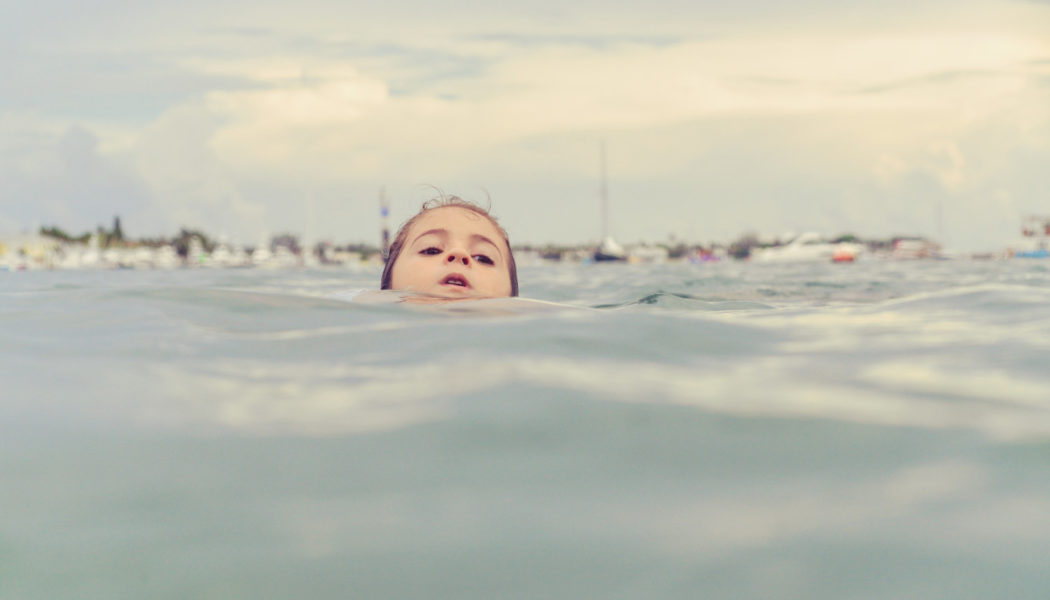The captain jumped from the deck, fully dressed, and sprinted through the water. A former lifeguard, he kept his eyes on his victim and headed straight for a couple who were swimming between their anchored sportfish and the beach. “I think he thinks you’re drowning,” the husband said to his wife. They had been splashing each other, and she had screamed, but now they were just standing neck-deep on a sandbar.
“We’re fine, what is he doing?” she asked, a little annoyed.
“We’re fine!” the husband yelled, waving him off, but his captain kept swimming hard toward him.
“Move!” he barked as he sprinted between the stunned owners. Directly behind them, not 10 feet away, their 9-year-old daughter was drowning. Once the girl was safely above the surface in the arms of the captain, she burst into tears and screamed, “Daddy!”
How did this captain know —from 50 feet away—what the father couldn’t recognize from just 10? Drowning is not the violent, splashing call for help that most people expect. The captain was trained to recognize drowning by experts and years of experience. The father, on the other hand, assumed he knew what drowning looks like because he watched television.
Former lifeguard Frank Pia, Ph.D. captured a drowning event and rescue on camera. The footage can help you recognize when a person is in danger.
Until that young girl who was rescued by the captain cried a tearful “Daddy,” the owner’s daughter hadn’t made a sound. As a former Coast Guard rescue swimmer, I wasn’t surprised at all by this story. Drowning is almost always a deceptively quiet event. The waving, splashing and yelling that dramatic conditioning (television) prepares us to look for is rarely seen in real life.
If you spend time on or near the water, then you should make sure you and your crew know how to detect when a person is in distress. Honing this skill is critical, particularly in light of new statistics that reveal drowning is the leading cause of accidental death for children under 5 and the second leading cause of accidental death for children 5 to 15 years old. It is estimated that over 80 percent of childhood drownings occur when the child is supervised. According to the Centers for Disease Control and Prevention, well over 50 percent of all drownings are adult men. Yet regardless of who drowns, in some cases, people are watching or are within yards of the victim and have no idea it is happening.
Francesco A. Pia, Ph.D. is the person who coined the term instinctive drowning response. This is what people do to avoid actual or perceived suffocation in the water. When someone is drowning there is very little splashing, and no waving, yelling or calling for help of any kind.
Dr. Pia, in an article he wrote for the Coast Guard’s On Scene magazine, described the instinctive drowning response like this:
- Except in rare circumstances, drowning people are physiologically unable to call out for help. The respiratory system was designed for breathing. Speech is a secondary or overlaid function. Breathing must be fulfilled before speech occurs.
- The mouths of drowning people alternately sink below and reappear above the surface of the water; they are not above the surface of the water long enough for the victims to exhale, inhale and call out for help. When the mouths are above the surface, they exhale and inhale quickly before sinking below the surface of the water
- Drowning people cannot wave for help. Nature instinctively forces them to extend their arms laterally and press down on the water’s surface. Pressing down on the surface of the water permits drowning people to leverage their bodies so they can lift their mouths out of the water to breathe.
- Throughout the instinctive drowning response, drowning people cannot voluntarily control their arm movements. Physiologically, drowning people who are struggling on the surface of the water cannot stop drowning and perform voluntary movements such as waving for help, moving toward a rescuer or reaching out for a piece of rescue equipment.
- From beginning to end of the instinctive drowning response, the bodies of drowning people remain upright in the water, with no evidence of a supporting kick. Unless rescued by a trained lifeguard, these people can only struggle on the surface of the water from 20 to 60 seconds before submersion occurs.
Former helicopter rescue swimmer Mario Vittone offers tips on how to take action when you detect a swimmer in distress.
This doesn’t mean that a person who is yelling for help and thrashing isn’t in real trouble—they are experiencing aquatic distress. Not always present before the instinctive drowning response, aquatic distress doesn’t last long, but unlike true drowning, these victims can still assist in their own rescue. They can grab lifelines, reach for throw rings, etc.
There are other visual cues to look for when trying to recognize a drowning person. They include the following:
- Head tilted back with mouth open
- Head low in the water, with mouth at water level
- Eyes glassy and empty, unable to focus
- Eyes closed
- Hair over forehead or eyes
- Not using legs
- Hyperventilating or gasping
- Trying to swim in a particular direction but not making headway
- Trying to roll over onto the back
- Appears to be climbing an invisible ladder
So, if a crewmember falls overboard and everything looks okay, don’t be too sure. Sometimes the most common indication that someone is drowning is that they don’t look as if they’re drowning. They may just look as if they are treading water and staring up at the deck. One way to be sure? Ask, “Are you alright?” If they can answer at all, they probably are. If they return a blank stare, you may have less than 30 seconds to get to them. And parents, children playing in the water make noise. When they get quiet, you need to get to them and find out why.
Learn More Myths About Drowning.
Learn more about safety at sea.
Join Our Telegram Group : Salvation & Prosperity









